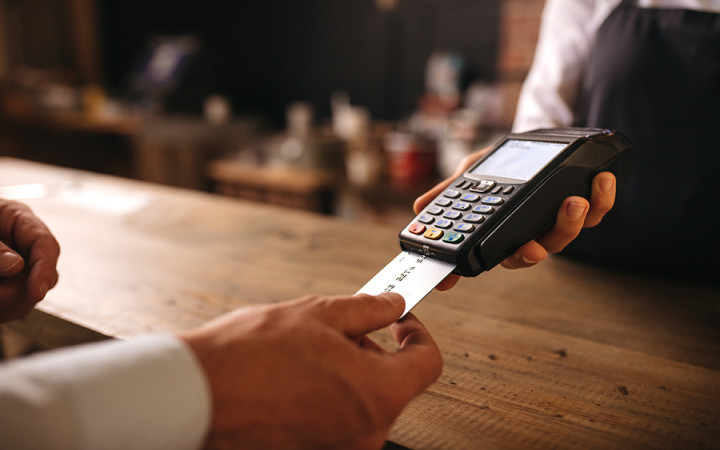Today’s Wonder of the Day was inspired by Richard. Richard Wonders, “How Do The Chips On Credit Cards Work?” Thanks for WONDERing with us, Richard!
Do you like to run errands with your friends and family members? Sure, grocery shopping isn't the most fun, but there's always the chance that you can finagle some chips or cookies into the shopping cart.
When all the shopping is finished, that's when the boring part comes in: checking out, loading all the stuff into the car, and then unloading it all again when you arrive home.
Do you pay much attention during checkout? If so, you may have noticed a change take place over the last several months.
If your friends and family members use a debit or credit card, you may have noticed that they no longer swipe their card through the machine. Instead, they insert it into a different slot on the front of the machine and wait.
What's going on here? It's new technology at work! Over the past several years, credit card companies have slowly been introducing a new type of card: the "chip" card or EMV card. EMV stands for "Europay, Mastercard, and Visa," which are the companies that developed the standards for these new cards that contain computer chips.
Although EMV cards are a relatively-new phenomenon in the United States, they've been in use in other areas of the world, especially Europe, since the early 2000s. EMV cards are quickly replacing magnetic stripe cards, which have been the standard since they were introduced in the 1970s.
Why add computer chips to debit and credit cards? EMV cards are designed to increase the security of transactions and reduce credit card fraud.
While magnetic stripe cards were cutting-edge technology for many years, criminals learned how to steal the information stored on the magnetic stripe and use it to create counterfeit cards. The resulting fraud cost banks and merchants over $5 billion every year.
EMV cards are more secure because of the inclusion of a computer chip. On a magnetic stripe card, all the data about the cardholder's account is contained in an unchanging format on that magnetic stripe and can be easily copied.
When an EMV card is used, however, the computer chip creates a unique transaction code that can never be used again. Chip cards are also hard to clone. If a thief steals data from a single transaction, it's useless because the transaction code can never be used again and attempted fraudulent transactions would simply be denied.
To date, statistics show that EMV cards are indeed working to reduce the amount of credit card fraud. Since 2015, credit card companies have seen 54-58% decreases in the amount of counterfeit fraud.




